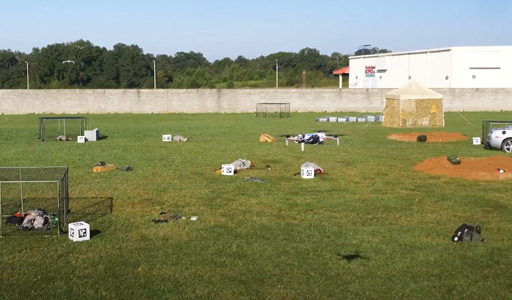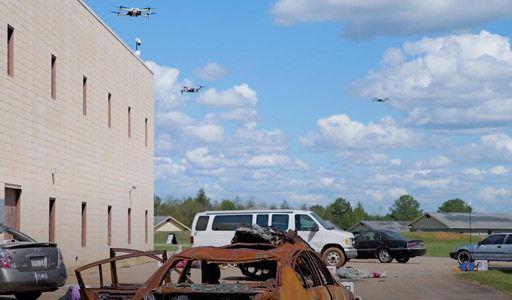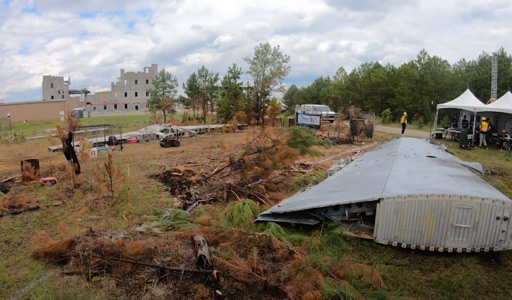Stand-off Casualty Assessment Challenge
Courses
Advancing Autonomous Triage Systems
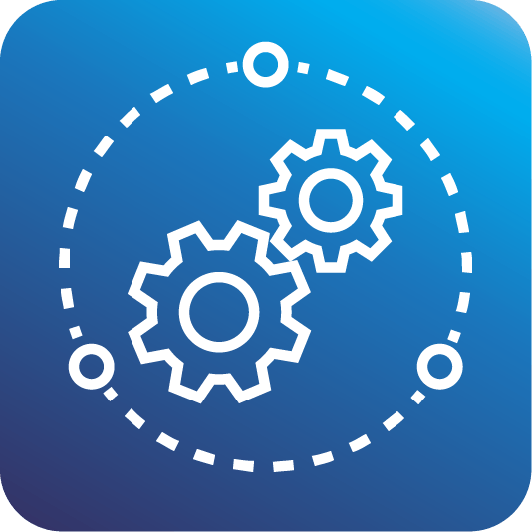
In Challenge Event 1, teams were challenged to perform stand-off evaluations of simulated casualties on three courses. Teams navigated through various terrain, physical obstacles while observing a minimum stand-off distance of 1 meter. Geolocation of casualties was not part of this event.
During primary triage in the field, casualties are assessed to determine priorities for treatment on scene and transport of patients to hospital.
Qualified funded and unfunded teams participated in the competitions, striving to advance the use of autonomous systems for rapid, stand-off casualty assessment to facilitate timely and accurate medical triage.
The objective of the Systems competition is to detect and identify physiological signatures of injury derived from data captured by stand-off sensors onboard autonomous systems. This will enable early prioritization of casualties in primary triage, allowing medical care professionals to quickly focus on the most urgent casualties.
Required Skills
Autonomous systems, sensors, User Interface development, machine learning, medical knowledge
Qualified funded and unfunded teams participated in the competitions, striving to advance the use of autonomous systems for rapid, stand-off casualty assessment to facilitate timely and accurate medical triage.
| Critical 4 points + 2 bonus each* | |
| Severe hemorrhage | Present Absent |
| Respiratory distress | Present Absent |
| Vitals 2 points + 1 bonus* | |
| Heart rate (HR) | Beats/minute (integer) |
| Respiration rate (RR) | Beats/minute (integer) |
| Trauma 2 points | |
| Head | Wound Normal |
| Torso | Wound Normal |
| Upper extremity | Wound Amputation Normal |
| Lower extremity | Wound Amputation Normal |
| Alertness 2 points | |
| Eyes | Open Closed Not testable |
| Verbal | Normal Abnormal Absent Not testable |
| Motor | Normal Abnormal Absent Not testable |
10 points + 5 bonus/casualty *Golden Window bonus: | |
The competing team set up and began their run in the designated Staging Area.
At the beginning of a run, teams deployed their systems where they explored, located, and triaged casualties for no longer than the time limit set for the scenario.
Observation data was transmitted to the team’s Base Station which provided triage reports to the Command Post (CP), where the reports were automatically evaluated and scored. The Command Post provided status back to the team’s Base Station.

Qualified funded and unfunded teams participated in the competitions, striving to advance the use of autonomous systems for rapid, stand-off casualty assessment to facilitate timely and accurate medical triage.
- AIR TAGS | Automated Image and Radar-based Triage, Assessment, and Geolocation System | DARPA-funded
- Chiron | DARPA-funded
- Coordinated Robotics
- DART | Drone Assisted Rapid Triage | DARPA-funded
- Engineering Dynamics and RIIS
- Pointer
- PRONTO | Penn RObotic Non-contact Triage and Observation | DARPA-funded
- RAPID | Reliable Assessment of People in Disasters
- RoboScout | DARPA-funded
- TTT | TAK Triage Technologies
- UAS-DTU | Unmanned Aerial Systems Delhi Technological University
Index
Home | About | Events | Resources | Media Gallery
Leaderboard
Only self-funded teams who score within the top five are eligible for prize money in the first two years. Final score is the average of the top two runs.
| Teams | Score | 1 | 2 | 3 |
|---|---|---|---|---|
| DART | 92.5 | 79 | 61 | 106 |
| Coordinated Robotics * | 84.0 | 77 | 52 | 91 |
| RoboScout | 73.0 | 71 | 37 | 75 |
| Chiron | 62.0 | 71 | 53 | 28 |
| UAS-DTU* | 40.5 | 13 | 54 | 27 |
| Engineering Dynamics* | 31.0 | 0 | 62 | 0 |
| PRONTO | 30.5 | 0 | 56 | 0 |
| AIR TAGS | 14.5 | 29 | 0 | 0 |
| POINTER | 9.5 | 0 | 19 | 0 |
| RAPID | 9.0 | 0 | 0 | 18 |
| TTT | 0.0 | 0 | 0 | 0 |
*Self-funded
Timeline
| Challenge Event 1 2024 | |
| Workshops | |
| Data | May |
| Systems, Virtual | June |
| Competitions | |
| Systems, Data, Virtual | September |
| Awards | |
| Ceremony | October |
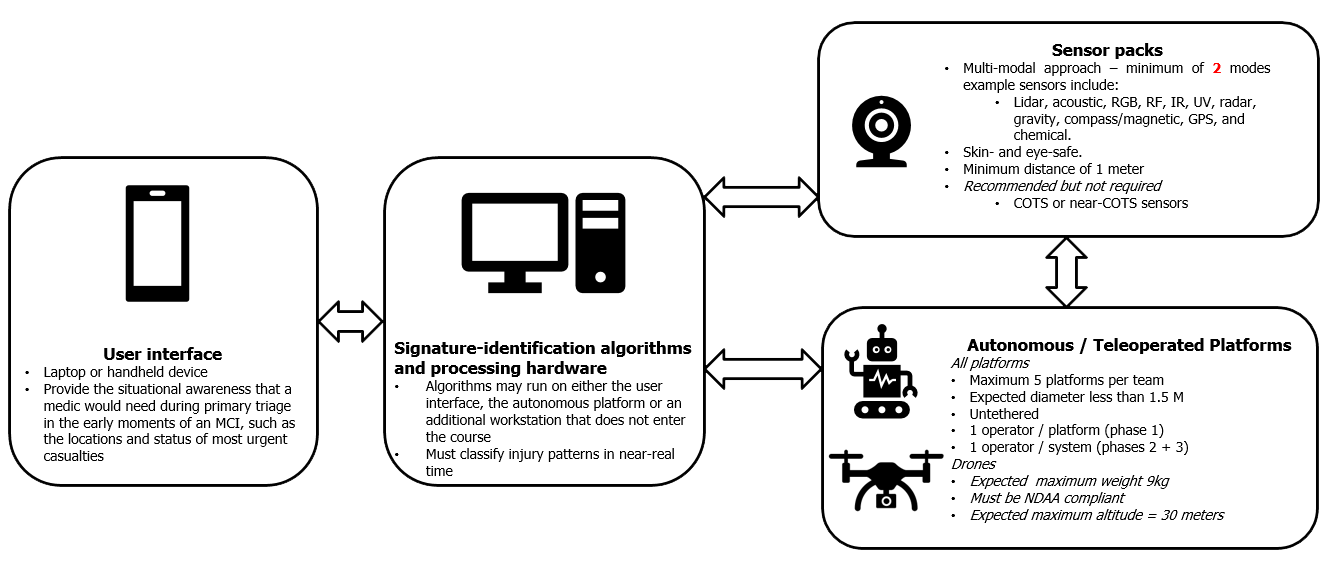
*Total system should fits in a single vehicle

Overview

Resources | FAQs | Terms and Conditions | YouTube Playlist | Media Gallery | Contact

